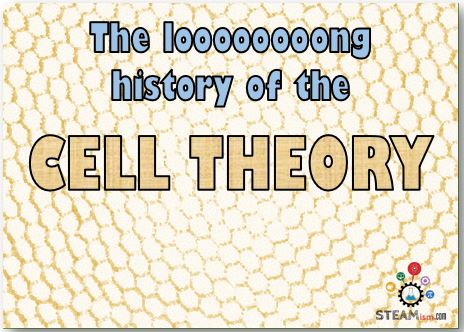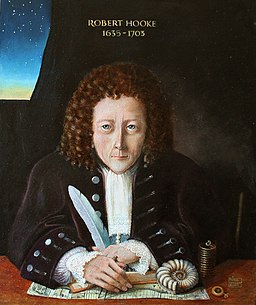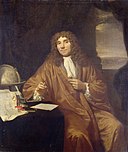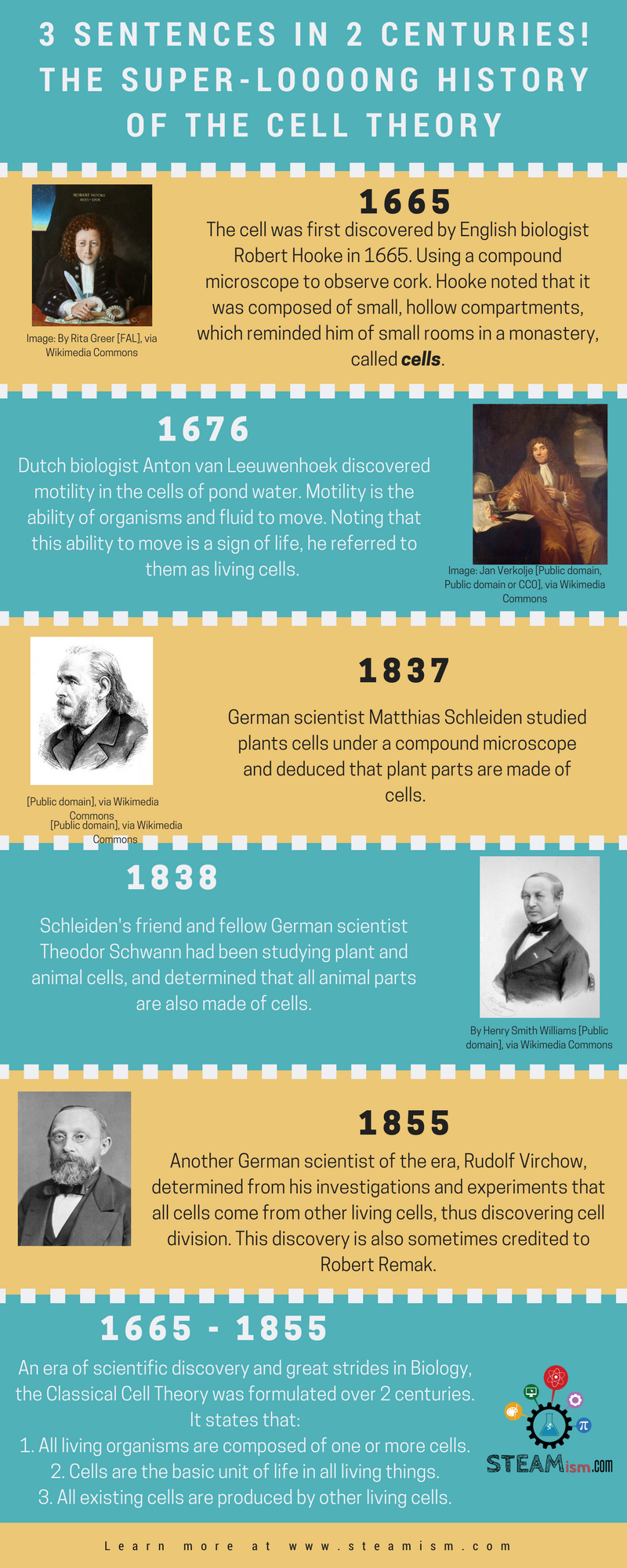What is the Cell Theory?
The Cell Theory is one of the basic and foundational principles of Biology and Science. Cells are the most basic unit of structure and function in living things. All living things live, grow and reproduce because of cells.
The Cell Theory states that:
- All living organisms are composed of one or more cells.
- Cells are the basic unit of life in all living things.
- All existing cells are produced by other living cells.
Who wrote the Cell Theory?
Interestingly, one scientist did not write the Cell Theory. 5 different scientists (biologists) formulated the Cell Theory over a period of almost 2 centuries!
The 5 biologists in chronological order (oldest to most recent) were:
- Robert Hooke
- Anton van Leeuwenhoek
- Matthias Schleiden
- Theodor Schwann
- Rudolf Virchow
The cell was first discovered by English biologist Robert Hooke in 1665 and described in his book Micrographia. In this book, he gave 60 ‘observations’ in detail of various objects under a coarse, compound microscope. He used a compound microscope to observe cork. Hooke observed that cork is composed of small, hollow compartments, which reminded him of small rooms in a monastery, called cella or cells. So Robert Hooke is responsible for discovering cells and giving them their name. Given the low magnitude of microscopes in his time, Hooke did not see “into” the cells and did not even think they were alive.
Anton van Leeuwenhoek:About a decade later in 1676, Dutch biologist used a microscope with 270X magnification to study drops of pond water. He noticed a great number of organisms and discovered motility in the cells he was studying. Motility is the ability of organisms and fluid to move. Noting that this ability to move is a sign of life, he referred to them as living cells. Robert Hooke was one of the first to confirm Leeuwenhoek’s observations.
Leeuwenhoek also was the first to identify and describe red blood cells, bacteria and sperm cells in animals and humans. This helped understanding of the process of fertilization.
Matthias Schleiden and Theodor Schwann
German scientist Matthias Schleiden studied plants cells under the compound microscope and deduced that plant parts are made of cells. He worked and discussed his findings with fellow German scientist Theodor Schwann. Schwann had been studying plant and animal cells, and determined that all animal parts are also made of cells. In 1839, Schwann and Schleiden’s findings formulated the first two statements of the Cell Theory:All living organisms are composed of one or more cells.
The cell is the most basic unit of life.
Rudolf Virchow
In 1855, yet another German scientist determined from his investigations and experiments that all cells come from other living cells.This completed the 3 tenets of Classical Cell Theory:
- All living organisms are composed of one or more cells.
- Cells are the basic unit of life in all living things.
- All existing cells are produced by other living cells.
How long did that take, again?
Started by Robert Hooke in 1665 and completed by Rudolf Virchow in 1855, the Classical Cell Theory was formulated over a period of 190 years!
Modern Cell Theory
As our scientific tools have gotten more powerful and our knowledge of cells has increased, Cell Theory has been expanded to include these ideas –
- Energy flow occurs within cells.
- Genetic information or DNA is passed on from cell to cell.
- All cells have the same chemical composition.
Links
Have the time for a video? Check out my video on Cell Theory!
- Need flash cards for quick review?: Quizlet Flash Cards on Cell Theory
- How To Write A Lab Report - April 8, 2023
- The States (Phases) of Matter - June 9, 2020
- What is Engineering? - June 2, 2020






